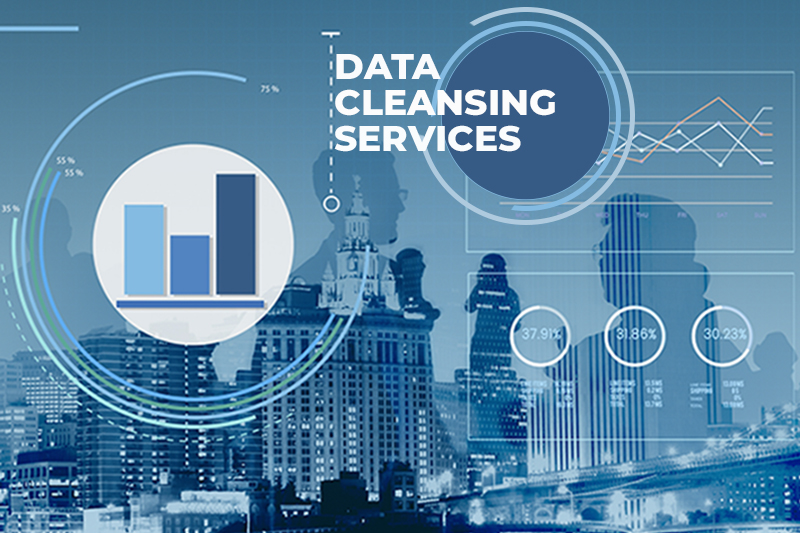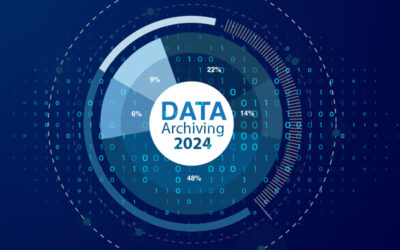Clean corporate data will ultimately boost output and give you access to the best information possible when making decisions. Companies and firms must manage data more effectively as its volume and size increase. Data that has to be cleaned or is dirty may be challenging to comprehend or combine. It might also be poorly formatted, have a jumbled structure, or duplicate content. Unclean data can waste a lot of time and money. Therefore, firms can ensure data hygiene with the use of data cleansing services in order to be as successful and cost-effective.
Purpose of Data Hygiene
Databases of business listings give marketing, customer outreach, and lead creation activities ammo. However, listing databases fall short of their promise without data hygiene. Incorrect segmentation and faulty projections are the results of an incorrect listing database. The pursuit of the wrong leads wastes efforts made to engage customers and increase revenues. According to marketingcharts.com, 57% of B2B marketers lack effective database updating procedures while being aware of the effects of dirty data. They rely on business listing databases, which guarantee to deliver accurate, up-to-date information, to fill the gap. However, for the listing providers themselves, ensuring data integrity becomes a crucial, round-the-clock concern. Therefore it is important for businesses to follow a rigorous data hygiene and ensure clean data so that you don’t lose credibility and reputation.
8 Best Practices to Ensure Data Hygiene
- Evaluating the state of the data
Analyzing the quality of your current database should be the first step in any data hygiene strategy. 27% of database suppliers are unsure of the degree of accuracy of their data. Prior to developing the data hygiene strategy, an audit must be conducted. Data aggregators have a propensity to gather as much data as they can. Better is more, but not always. Overwhelming amounts of information can allow inaccurate information to get through.
- Verify that the data fields are applicable to individuals who will utilize them to find leads.
- Verify that the data fields will have an impact on individuals using it for sales communication.
- Examine all client data to identify the fields that are accurate and necessary.
- Since omni-channel sources can pool in silos, you should audit all the sources you used to gather the data.
To create an efficient data hygiene strategy to comprehend the sources and current data, all these first procedures are essential. They make maintaining a listing database less difficult.
- Determine the metrics for data hygiene and the tracking system for metrics for data hygiene
Set explicit guidelines for what your ideal database should have and what fields to list. Create key performance indicators (KPI) for data quality for fields such as contact information, location, behavior, demographics, and firmographic information. Create a precise plan of action to respond to:
- How are the KPIs going to meet?
- Which instruments will you utilize to monitor the condition of your data?
- Will you employ database management specialists for B2B listings?
- How do you intend to continuously maintain data hygiene?
Any effort to develop KPIs and track data will highlight the areas where the majority of your problems in data quality occur. It will assist you in comprehending the data difficulty that is negatively impacting your database.
- Standardize contact information at the entry point
If you let soiled or irregular data to enter your database without being reviewed, you cannot maintain listing data hygiene. Make sure only standardized data is entered into your database before you even begin cleaning it. Unreliable data thrives in non-standardized data. Additionally, it facilitates finding and getting rid of duplicates.
Create a standard operating procedure (SOP) for data standardization after consulting with your team.
- List all the fields that need standardization.
- For consistency, convert all numbers, monetary values, and other nominal values.
- Depending on the needs of the database, convert abbreviations to lengthy forms or vice versa.
- Enable case sensitivity
- Real-time data validation
Check the accuracy of your data. It is a good idea to verify all of your business listing information using several sources. Validating huge volumes of old records and pushing fresh customer profiles allow clients to discover new prospects and opportunities. To find abnormalities, errors, or broken records, validation with various levels of human and rule-based validation is helpful.
You should establish the following validation criteria for your database:
- Cross-referencing validation: Evaluate incoming data against trustworthy public or third-party databases, discard material that does not match the most recent data, and pinpoint unreliable data sources. Cross-referencing is essential for verifying the information in business listings.
- Data type validation seeks out discrepancies between data types and values. Check the entered value again to see if there was an error or to see whether it fits the range of values.
- Set pre-defined criteria on numeric data for specific fields using range checking. If the given numeric number does not fall inside the defined range, an alarm will be raised.
- Complex data validation is necessary for many business listing databases, which call for thorough and personalized validation. In these situations, tool-enabled validation assists in validating the data in accordance with specific parameters.
By using these procedures, you can guarantee the accuracy of your data and move the benchmarks for data quality one step closer to being fulfilled.
- Find and eliminate duplicates
Locating and removing redundant data is essential.
For any company, duplicate records are a recurrent issue. Emails are a common tool used by businesses to identify contact entities. Customers frequently enter their personal email and their work email in different submission forms, though. As a result, two unique but identical records are created. It is important to take every precaution to keep their listing databases free of duplicate entries. Utilize data cleansing techniques to automatically identify duplicates in large amounts of raw data.
- Use the DELETE JOIN command, an intermediary table, or the ROW NUMBER () function to remove duplicate entries, depending on your database’s needs.
- Data hygiene relies on the usage of data cleansing technologies that combine and eliminate duplicate records using a variety of business principles.
- Data hygiene relies on the usage of data cleansing technologies that combine and eliminate duplicate records using a variety of business principles.
Duplicate records lead to erroneous reporting and impede your clients from having a single view of their consumers. Customers will have a negative experience with it, which is terrible for your brand’s reputation.
- Include data
Your business listing database has fields for the contact record’s first and last names, email addresses, and business addresses. B2B data vendors should provide additional data fields to the records, such as title, phone number, annual revenue, tech stack, contact location, etc., in order to create marketing, sales, and customer care strategies.
- Use third-party databases to insert information after your data has been standardized, validated, and de- duplicated.
- The existing database can be further enhanced by being made denser by the addition of new data pieces.
- Obtain data directly from third-party websites, such as LinkedIn.
- The listing database can be organized and cleaned using software solutions before being used for business intelligence and analytics.
- Make your data hygiene routine automatic
Manual data hygiene is time-consuming, inefficient, and expensive. Investing in systems or solutions that automatically clean up, enrich, append, and de-dupe records is worth the time, money, and effort. In manual data input, mistakes are unavoidable, and human error is the main source of inaccurate data.
A single inaccurate record can cost you a lead and hundreds of dollars in potential lost revenue. Your databases can be combed through by data cleansing tools for duplicate records. Additionally, it analyses a large amount of data and employs algorithms to find anomalies and outliers brought on by human error. Only 46% of businesses employ automated solutions to enrich, add, and de-dupe listings databases, while being aware of the possibilities of enrichment and cleansing systems.
- Update information in real time:
Your B2B listing database deteriorates at a 70% annual rate. Numerous things can cause this. Companies dissolve, postal addresses change, phone numbers and email addresses change, mergers and acquisitions occur, and so on. Up to 18% of all phone numbers and up to 21% of CEOs can change annually. In addition, up to 60% of people switch employment roles each year within their firms.
Data deterioration happens quickly. To stop data deterioration, a method for monitoring and constantly updating data must be established. You may prevent clients from pursuing fruitless leads and dealing with subpar marketing ROIs by updating data almost instantly.
| Learn more: 10 Types Of Data That Need Data Cleansing |
The conclusion is that incorrect data is fairly expensive and not just financially and in terms of time. In addition, if you use shady sales statistics, you put your reputation on the line, which could cost you dearly. Utilize these suggestions to maintain your database organized and in compliance with all data privacy laws. In order to ease the stress of maintaining data hygiene, you can cooperate with reputable data cleansing services that provide a ready pool of qualified data specialists. They make large investments in technologies that you may use to increase productivity, and they also have extensive knowledge and skill in database enrichment.




